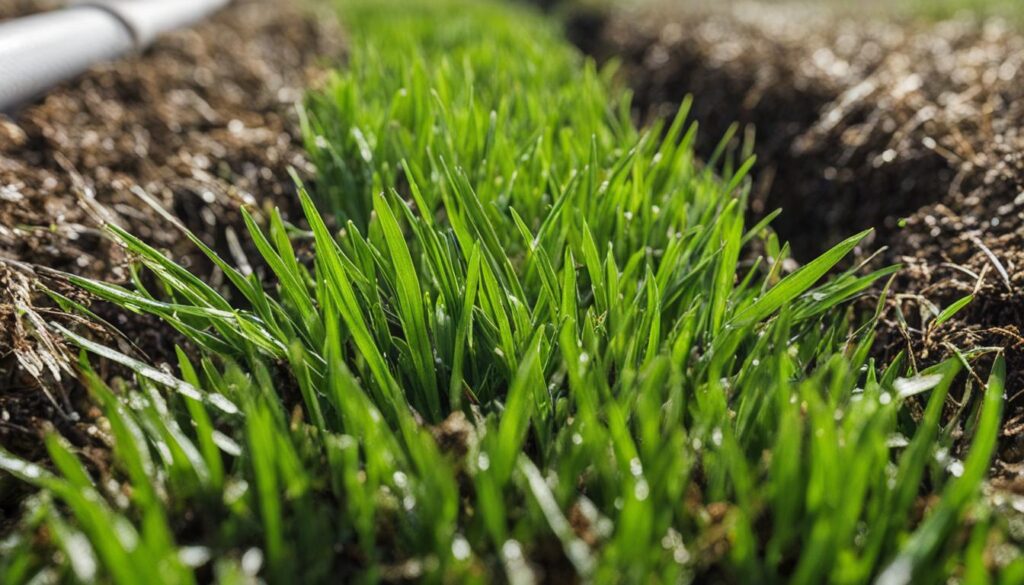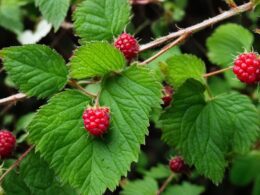If you have St. Augustine grass in your lawn, you may be familiar with the frustrating problem of fungus. During the spring season, this type of grass is particularly susceptible to various fungus diseases, such as take-all root rot, brown patch, and grey leaf spot. The presence of fungus can cause unsightly brown patches, withering of the blades, and even dead-looking grass.
Fortunately, there are proven ways to combat and prevent fungus in St. Augustine grass. By following proper lawn care practices, applying fungicide when needed, and using correct watering techniques, you can effectively control fungus and keep your lawn healthy and vibrant.
Key Takeaways:
- Fungus diseases, such as take-all root rot, brown patch, and grey leaf spot, commonly affect St. Augustine grass.
- Over-watering and rapid temperature changes are some of the factors that contribute to fungus growth in St. Augustine grass.
- Treating and preventing fungus in St. Augustine grass requires a combination of strategies, including timely fungicide applications and proper watering techniques.
- Regular lawn maintenance, such as mowing at the proper height and improving air circulation, can also help prevent fungus in St. Augustine grass.
- By following these tips and staying proactive in your lawn care routine, you can combat and prevent fungus, ensuring a lush and vibrant St. Augustine grass lawn.
What is St. Augustine Fungus?
St. Augustine fungus refers to various types of lawn fungus diseases that commonly affect St. Augustine grass. Some examples of these fungus diseases include take-all root rot, brown patch, and grey leaf spot. Take-all root rot not only affects the St. Augustine grass but also Bermuda grass, resulting in circular patches of brown or dead-looking grass. On the other hand, brown patch appears as thin layers of brown grass on the lawn, typically during the fall season. Lastly, grey leaf spot is characterized by oblong, grey-to-ash-brown lesions on the grass blades. These fungus diseases can cause significant damage to the turf, but with appropriate treatments, they can be effectively controlled and managed.
Controlling and treating St. Augustine fungus is crucial to maintaining a healthy lawn. Understanding the types of fungus diseases that commonly affect St. Augustine grass, such as take-all root rot, brown patch, and grey leaf spot, allows for targeted and effective solutions. By employing the right treatments and management strategies, you can prevent the spread of fungus and maintain a vibrant and lush St. Augustine grass lawn.
Causes of Fungus in St. Augustine Grass
Several factors can contribute to the development of fungus in St. Augustine grass. Understanding these causes is crucial in preventing and controlling its growth.
One of the main causes of fungus in St. Augustine grass is over-watering. When certain areas of the lawn are excessively watered, it creates a moist environment that promotes fungus growth. To prevent this, make sure to water your lawn appropriately and avoid excessive water accumulation in specific areas.
Rapid temperature changes, especially during the spring season, can also make St. Augustine grass more susceptible to fungus. Fluctuating temperatures create stress on the grass, weakening its natural defense mechanisms and making it more vulnerable to fungal infections.
Additionally, neighboring lawns infected with a fungus disease can contribute to the spread of fungus to your St. Augustine grass. Fungus spores can easily be carried by wind, insects, or even through direct contact between grass blades. Keeping an eye on the health of neighboring lawns is important in preventing the spread of fungus to your own lawn.
By being mindful of these causes, you can effectively prevent and control fungus growth in your St. Augustine grass, keeping your lawn healthy and vibrant.
Treating and Preventing St. Augustine Grass Fungus
To effectively treat and prevent fungus in your St. Augustine grass, it is essential to implement a combination of strategies. By following these methods, you can ensure that your lawn remains healthy and free from the common fungal diseases that affect St. Augustine grass.
Applying Fungicide Treatments
One critical step in combating fungus is to apply fungicide treatments at the right time. Fungicides are specifically formulated to control and suppress the growth of various fungus diseases that can infect St. Augustine grass. When selecting a fungicide, choose one that targets the specific type of fungus affecting your lawn. Follow the instructions provided by the manufacturer for the correct application method and frequency.
Proper Watering Techniques
Another key factor in preventing fungus growth is proper watering. Over-watering can create a moist environment that promotes the development of fungus, while underwatering can stress the grass and make it more susceptible to infections. Find the right balance by watering your St. Augustine grass thoroughly but infrequently. Avoid watering in the evening, as this can lead to excess moisture that encourages fungus growth. Instead, water your lawn in the early morning to allow the grass blades to dry throughout the day.
Lawn Maintenance
In addition to fungicide treatments and proper watering, regular lawn maintenance plays a crucial role in preventing and managing fungus in St. Augustine grass. Mow your lawn at the proper height, as cutting it too short can weaken the grass and make it more susceptible to fungal infections. Improving air circulation by trimming back overhanging branches or thinning out dense areas can also help prevent the buildup of excess moisture, which creates an ideal environment for fungus to thrive.
Can the Methods to Combat White Mold on Grass also be Used for St Augustine Grass Fungus?
Yes, prevention and cure tips for combating white mold on grass can also be used for St. Augustine grass fungus. Good lawn maintenance practices, proper watering, and adequate air circulation are essential for preventing and treating these types of fungal diseases in grass.
Conclusion
Fungus can be a frustrating problem for St. Augustine grass owners, but with the right strategies and treatments, it can be effectively controlled and prevented. Understanding the different types of fungus diseases that affect St. Augustine grass, their causes, and the proper methods of treatment and prevention is key to maintaining a healthy and vibrant lawn. Regular lawn care, including proper watering and timely applications of fungicide, can go a long way in combatting fungus and keeping your St. Augustine grass looking its best. By following these tips and staying proactive in your lawn care routine, you can enjoy a lush, fungus-free lawn year-round.











